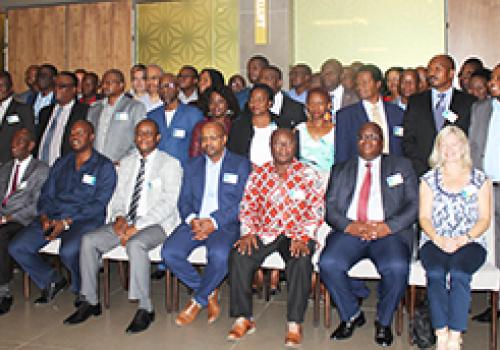The workshop is in line with the SADC Regional Disaster Risk Reduction (DRR) Framework which provides for seasonal disaster preparedness planning at national and regional level to mitigate all forms of disasters in the region which are linked to hydro meteorological factors.
The 2018/19 seasonal disaster preparedness planning is one of the recommendations from the 22nd Annual Southern Africa Regional Climate Outlook Forum (SARCOF-22) which presented a consensus outlook for the 2018/2019 rainfall season over the SADC region. In particular, the El Niño-Southern Oscillation (ENSO) is currently in its neutral phase and is projected to continue in the weak warm (El Niño) phase during the period between October 2018 - March 2019 with normal to below-normal rainfall.
The workshop brought together DRR experts from the SADC region and beyond and successfully fulfilled its specific objectives in reviewing the national and regional disaster contingency plans for the 2018/19 with specific focus on implications of the potential impacts El Niño and management of key outbreaks. Among others, the workshop:
- Developed a response monitoring mechanism for tracking seasonal developments for drought and key outbreaks such as Ebola, Cholera and Hepatitis E.
- Facilitated sharing of tools, experiences, challenges, best practices and lesson-learnt related to disaster preparedness planning in the SADC region.
- Also conducted regional technical validation of key strategic DRR documents under development in support of the SADC Regional DRR.
The workshop was in response to the provisions of the SADC Disaster Preparedness and Response Strategy and Fund (2016 – 2030) which was approved by the SADC Council of Minister in 2017, particularly the Strategy Priority number 2, which calls for dedicated focus on strengthening disaster preparedness and response capacity.
In his address, the Acting Permanent Secretary from the Office of the Prime Minister in Namibia, Mr Indongo Shivute called upon the SADC Member States to act together on issues of common interests and coming up with a comprehensive and integrated regional approach to Disaster Risk Reduction. He lamented the El Niño which was anticipated to sweep through the region, saying it will heavily affect some Member States by inducing either drought or floods. He further stated that this was one of the many initiatives which aim to provide SADC and its Member States with opportunities to implement the right decisions and develop strategies and recommendations which mitigate all forms of hardships that occur as a result of the El Niño phenomenon including floods, drought and other natural hazards.
The SADC Director of Food, Agriculture and Natural Resources (FANR), Mr. Domingos Gove informed the gathering that the overall goal of the 3-day meeting was to contribute to the substantial reduction of disaster risk and losses in lives, livelihoods and health and in the economic, physical, social, cultural and environmental assets of persons, businesses and communities. He said the projected El Niño conditions with below normal rains and high temperatures painted a threatening picture in terms of rainfall performance and by implication food production.
The workshop was attended by SADC Member States from the National Disaster Management Agencies and those responsible for disease outbreak control as well as those from key sectors for national drought response mechanisms; the Regional Inter-Agency Standing Committee (RIASCO) and other regional and international stakeholders responsible for DRR including International Cooperating Partners and International NGOs.
The workshop was supported through the SADC DRR Capacity Enhancement Project with funding from the World Bank under the European Union and ACP Programme on Natural Disaster Risk Reduction.

